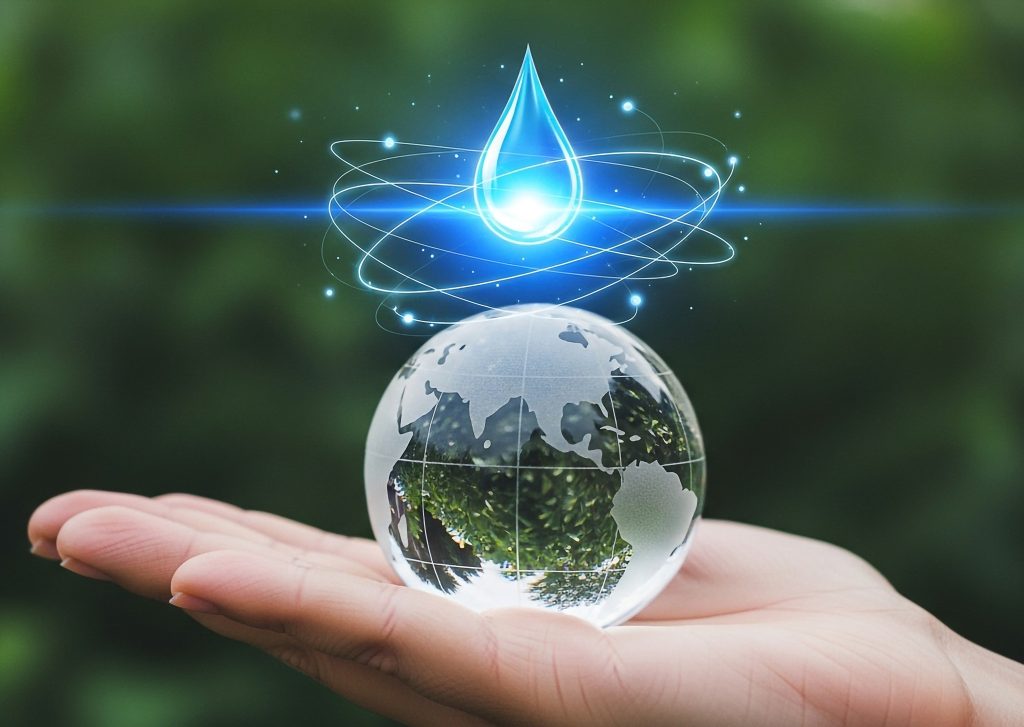News
UK Water Availability ‘Must Increase’ To Hit Decarbonisation Goals
A new study has found that water availability in the UK must be increased significantly if the country is to achieve its decarbonisation goals of net zero by 2050… yet water demand is expected to rise sharply between now and then, driven by hydrogen production and carbon capture/storage technologies.
Carried out by the University of Durham, the research project assessed both existing and planned decarbonisation schemes within industrial clusters around the UK to determine how future water needs align with projected regional water availability.
Technological water demand
Both hydrogen production (considered a cheaper fossil fuel alternative) and carbon capture/storage are water-intensive processes. For example, it uses around 30 litres of water to produce 1kg of hydrogen, while capturing 1kg of CO2 uses around three litres of water.
Extrapolating these figures using computer modelling and spatial analysis, the researchers found that water demand from decarbonisation projects could hit 860 million litres of water each day by 2050 (give or take 150 million litres).
In all, five water supplier regions were covered in the study: Anglian Water, Severn Trent Water, Northumbrian Water, Yorkshire Water and United Utilities.
Anglian Water and United Utilities were predicted to see significant water deficits by 2030, with the same said for Yorkshire Water come 2040.
As such, measures to prevent water shortages in the future should be implemented, including improving water management, desalination and water recycling.
University professor Simon Mathias commented on the results, saying: “Our analysis shows that decarbonisation efforts, associated with carbon capture and hydrogen production, could add up to 860 million litres per day of water demand by 2050.
“In some regions, for example Anglian Water and United Utilities, deficits could emerge as early as 2030 unless proactive measures are taken.
“To ensure sustainable resource use, it’s vital that decarbonisation project managers work closely with water companies. Exploring innovative ways to reduce the water demand of decarbonisation technologies must be a priority. Regional desalination hubs and adaptive water management strategies should also be part of the conversation.”
What can businesses do to help water stress & scarcity?
The more you learn about the water crisis, the more distressing and overwhelming it can feel… but, as a business, you’re well placed to make a significant impact and help build resilience into the UK’s systems, shoring up resources for future generations.
There are various strategies you can employ to reduce water usage and consumption, including
Water leak detection & repair
Water leaks often take place below ground so can be hard to spot, or they’re so small that they’re barely noticeable. You may not even know that there’s an issue until you’re hit with a large water bill. Prioritising water leak detection and taking immediate action to repair issues when they arise will reduce water wastage and save you money.
Reduce overall usage
Run awareness campaigns so that staff members are aware of their individual responsibilities, have a water audit of your site carried out so you can see where and how you’re using water to allow you to bring in appropriate water-saving solutions over time, and invest in water-efficient technologies and practices relevant to your industry.
Greywater recycling
Using greywater (relatively clean wastewater created from baths, sinks and washing machines) in place of mains water for applications like toilet flushing, irrigation and industrial processes can reduce pressure on supply.
Rainwater harvesting
Consider ways in which you could harvest rainwater that falls on the roof of your buildings so that you can use it instead of mains supplies.
Consider the supply chain
Thinking outside the box can help you save even more water, as well as boosting your green credentials and ensuring that consumers look favourably upon your brand. Review your supply chain and see where you can use local suppliers, or perhaps only consider working with partners that also prioritise water sustainability.
Think regionally
It can also be beneficial to look at what specific issues your particular region faces where water is concerned so you can take community action and show your support in this way.
For example, there may be a particularly strong pollution problem, or perhaps surface water runoff is the biggest issue. Once you know what issues your region faces, you can best work out how to go about doing your part to address them.
Of course, all of this can feel like a big undertaking and it can be hard to know where to begin. If you’d like to talk through your options with water consultancy experts, get in touch with the H2o Building Services team today.
